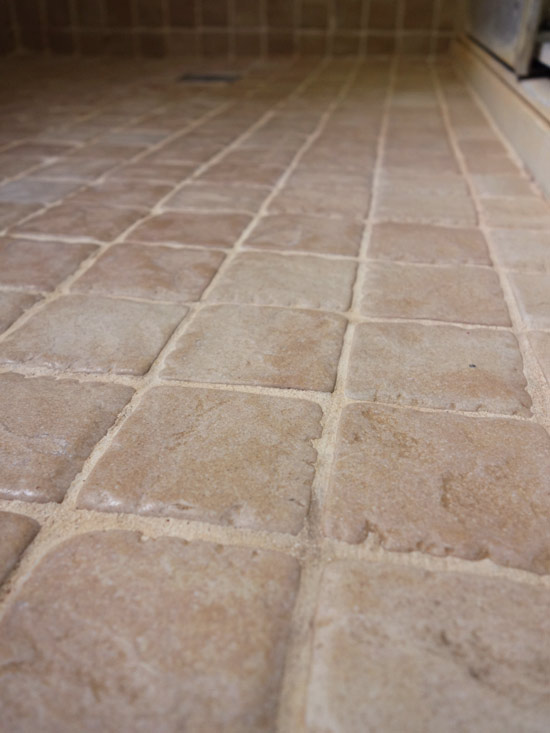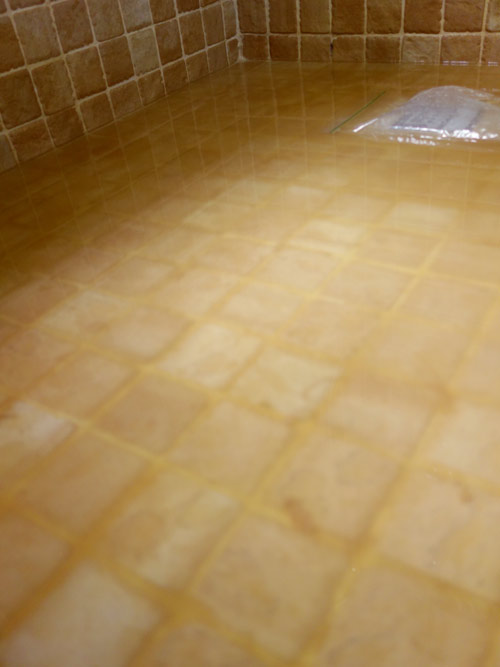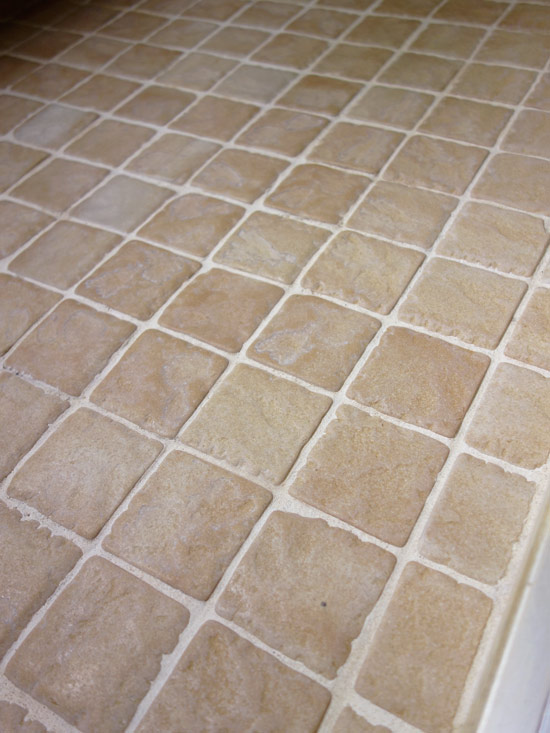You know the pinkish mold in your bathroom. The one that every single bathroom in the world has. The one where it looks more orange than pink but people still call it pink. Well, I have a couple of good news and bad news for you. Good news is, it’s not mold. Whew! Bad news is, it’s more likely to be bacterial growth. Doh! Now that we’re clear that this pink mold is actually orange bacteria, what’s next? Well, bad news is, it’s impossible to remove it in its entirety. Good news is, we can slow down its growth by ensuring wet areas are always dry. Bad news is, that means wiping down the ENTIRE bathroom and ensuring its dryness every single time after you use it. Let’s keep it real. No one’s going to be doing that anytime soon. Definitely not me.
So, what then? Well, a good old fashioned scrubbing is the best solution. However, if you know me, I like to reduce as much effort needed to exert any energy in any task as I can. In other words, I’m lazy. So even if the only probable solution to this pink orange issue is scrubbing, I’d like to do the least scrubbing. In order to be able to do the least scrubbing, we need something to do the scrubbing for us. Something that is effective in breaking down the structure of the growth.
I did a patch test using three natural cleaners: Baking Soda, Citrus Enzyme and Hydrogen Peroxide. What about baking soda+vinegar solution, or just plain ol vinegar or even bleach?
Well,
1. Baking soda + vinegar: An age-old myth really. Combining these two gives you a solution that comprises of salt and water and no cleaning power.
2. Vinegar: Acidic and it eats up porous material like grout.
3. Bleach: Bad for health, smells horrendous, breaks down the grout and the color will wear away.
So since the above are out of the question, let’s get back to the three patch tests.
Results?
1. Baking Soda: Works. But it requires more scrubbing than I’d like.
2. Citrus Enzyme: GREAT! Barely any scrubbing needed.
3. Hydrogen Peroxide: GREAT! The least scrubbing needed.
So, if you can get hold of Hydrogen Peroxide 3%, spray it undiluted on the grout, let sit for 10 minutes, scrub it a little just to loosen the stains and rinse. Local pharmacies usually carry them for less than 2 dollars.
However, it may be difficult to get hold of Hydrogen Peroxide in some countries especially in Asia. And since Citrus Enzyme is so easy to make at home, enzyme is the way to go. Plus, enzyme costs next to nothing compared to HP. And it really works! So happy.
Now that you can breathe a sigh of relief with the pink mold issue… what about black mold? Yes, there’s that too. Good news is, they too are super easy to remove as well. Read here to find out how.
How do you get rid of pink mold on bathroom grout?
Quick Method
what you need:
Undiluted citrus enzyme
Plastic bag (I used ziploc), filled with water and zipped/tied up
Long handle brush
directions:
1. Put water plastic bag over the drain to stop water from draining.
2. Fill the floor with water just enough that there is standing water on the tile grout. Not too much or else you would require unnecessarily more enzyme.
3. Pour undiluted citrus enzyme and mix it with water until well combined. The water should turn to a medium dark color. If the stains have been there longer or there is plenty of them, use a 10:3 water to enzyme ratio. Or else a 10:2 or 10:1 is sufficient.
4. Let sit for 10 minutes.
5. Use the brush and give it a scrub or two. For heaven’s sake don’t use a toothbrush. It’ll take forever. Unless it’s for the corners. Drain the water and rinse.
Notes:
1. There shouldn’t be any sore arms, back breaking, head sweating, heart beating kind of scrub. I took less than 2 minutes to scrub, drain and rinse.
If you find yourself scrubbing too much, that means there wasn’t sufficient enzyme or the stain is very stubborn. In that case, repeat steps 1 – 5, use a higher ratio of enzyme and let sit longer, perhaps 20-30 minutes.
2. For grout on walls, spray undiluted citrus enzyme, let sit for 5 minutes, spray again, let sit for another 5 minutes and scrub. Wall are a little trickier. Our enemy is gravity. Any solution will trickle down and it doesn’t really ‘sit’ as much as it should in order to do the work properly. So we need more cleaning power. That explains why to use undiluted enzyme and to spray twice.
3. For tiled floor other than the bathroom, well, let’s just say this is a great opportunity to flood your house. I kid you. Wet the floor using a very wet rag or mop with the same enzyme solution. Let sit for 10 minutes, brush the grout, and wipe dry. Caution: Slippery floor.
4. For other surface areas with pink mold like tubs, sinks, toilet bowls or counter tops, read more here.




4 comments
A well-detailed article, thanks for sharing this one.
I have had this orange ‘mold’ for months and totally flummoxed as to what to do about it. Reading your blog was like seeing a Doctor when you have some illness after you’ve seen 100 and still no one can tell you either what it is, correctly, nor how to fix it. Then came you!
Regarding citrus enzyme for the orange bacteria/pink mold issue….any idea if this is OK or not for marble tiles?
Hi Merlene. From my understanding, acidic cleaners like vinegar or citrus fruit like lemon are a no no for marble surfaces. Citrus enzyme (although made from citrus peels) has fermented and turned to alcohol. At this point, the PH level is less acidic. Plus, it’s not used in full strength here. It is diluted. The picture of the tiles in this post is made of marble and I’ve used the enzyme to clean it. You might lose the shine but the cleaner won’t eat up the surface. If you’re still unsure, try a small patch first. Or for the safest, use hot water and dish soap for marble surfaces. Hope this helps.